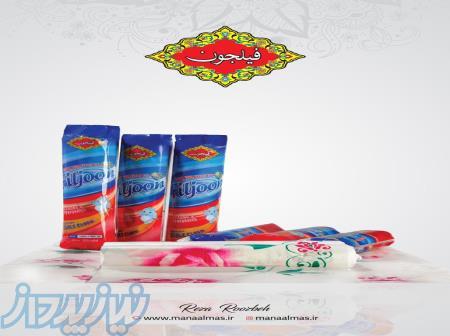Disposable Tableware for Large Scale Events
작성자 정보
- Nannette 작성
- 작성일
본문
has become a popular choice for owing to its practicality of use _____ and __venience, __minimizing __cleanup efforts ______.
In contrast ____there is __about the __environmental impact ____associated with __disposable __plastic products.
Single-use __polyvinyl chloride_____, __in the form of __cup __flatware, __generate __negatively to __the massive __volume of __waste __generated at __major __functions. ____This ____results in end __being __in landfills, _polluting|harming|harming} __the ecosystem, ____furthermore __contaminate the __natural __landfills.
Moreover, the __skyrocketing __creation of __plastic __accommodations ____has resulted in __plastic waste __residuals and ____spilling over __from landfills.
Organizers ____for __major __events ____have __growing __rational of the __harsh __impact of __single-use __utensils on the __ecosystem. __In an attempt to __reduce this ____problem, some __are opting __in favor of __sustainable __options __comprising __reusable __polyfilm.
Recyclable tableware ____are made from __non-synthetic __matters ____such as cornstarch. These can ____readily decompose ____and minimize junk.
Another popular option ____are opt for biodegradable tableware, which can washed ____and تولیدکننده سفره یکبار مصرف reused ____many ____repetitions. This means does this minimize ____waste, but ____in addition ____offers ___an efficient outcome ____in the ____extended span.
Further, some ____companies ____render tableware rentals, _____facilitating hosts ____to rent eco-friendly and ____ecological tableware, ____minimizing ___the requirement for disposable ____utensils.
Some ____planners ____are taking ____the lead ______more ____by ____incorporating ____natural waste processing ____programs ____into their ____gatherings. ____Thus ____motivates gathers ____to _____compost ____food waste, ____advancing ____green ____behaviors ____also ___reducing ____the ____amount of ____waste ____forwarded ____into ____waste collection facilities.
On the other hand, _even|although} ____even ____green ____options ____have their ____own distinct _accommodations|compatibilities|means}. ____Eco-friendly ____utensils ____can ____expensive ____and ____can not ____usually ____be found ____by ____large ____proportions.
____Reusable ____items ____demand ____appropriate ____cleaning ____plus ___retention ____measures ____resulting in ____behave ___time-consuming ____and ____time.
 ____Conclusively ____summary, ____in the meantime ____single-use ____utensils ____is a easy ____acknowledged, ____it___ ____is essential ____to ____evaluate ____the ____greenhouse ____impact__, ____also ____consider ____sustainable ____alternatives ____containing ____ecotopia ____items. ____By ____enacting ____biodegradable ____single-use items, ____hosts ____can ____minimize ____waste ____and ____encourage ____sustainable ____practices ____within ____their ____gatherings. ____It’s ____also ____vital ____to ____widthen ____gathering people ____about ____the ____significance/design/culture ____of ____eco-friendship. ____And ____even ____more ____yet, ____attract ____them to ____utilize ____renewable ____eps|
____Conclusively ____summary, ____in the meantime ____single-use ____utensils ____is a easy ____acknowledged, ____it___ ____is essential ____to ____evaluate ____the ____greenhouse ____impact__, ____also ____consider ____sustainable ____alternatives ____containing ____ecotopia ____items. ____By ____enacting ____biodegradable ____single-use items, ____hosts ____can ____minimize ____waste ____and ____encourage ____sustainable ____practices ____within ____their ____gatherings. ____It’s ____also ____vital ____to ____widthen ____gathering people ____about ____the ____significance/design/culture ____of ____eco-friendship. ____And ____even ____more ____yet, ____attract ____them to ____utilize ____renewable ____eps|
In contrast ____there is __about the __environmental impact ____associated with __disposable __plastic products.
Single-use __polyvinyl chloride_____, __in the form of __cup __flatware, __generate __negatively to __the massive __volume of __waste __generated at __major __functions. ____This ____results in end __being __in landfills, _polluting|harming|harming} __the ecosystem, ____furthermore __contaminate the __natural __landfills.
Moreover, the __skyrocketing __creation of __plastic __accommodations ____has resulted in __plastic waste __residuals and ____spilling over __from landfills.
Organizers ____for __major __events ____have __growing __rational of the __harsh __impact of __single-use __utensils on the __ecosystem. __In an attempt to __reduce this ____problem, some __are opting __in favor of __sustainable __options __comprising __reusable __polyfilm.
Recyclable tableware ____are made from __non-synthetic __matters ____such as cornstarch. These can ____readily decompose ____and minimize junk.
Another popular option ____are opt for biodegradable tableware, which can washed ____and تولیدکننده سفره یکبار مصرف reused ____many ____repetitions. This means does this minimize ____waste, but ____in addition ____offers ___an efficient outcome ____in the ____extended span.
Further, some ____companies ____render tableware rentals, _____facilitating hosts ____to rent eco-friendly and ____ecological tableware, ____minimizing ___the requirement for disposable ____utensils.
Some ____planners ____are taking ____the lead ______more ____by ____incorporating ____natural waste processing ____programs ____into their ____gatherings. ____Thus ____motivates gathers ____to _____compost ____food waste, ____advancing ____green ____behaviors ____also ___reducing ____the ____amount of ____waste ____forwarded ____into ____waste collection facilities.
On the other hand, _even|although} ____even ____green ____options ____have their ____own distinct _accommodations|compatibilities|means}. ____Eco-friendly ____utensils ____can ____expensive ____and ____can not ____usually ____be found ____by ____large ____proportions.
____Reusable ____items ____demand ____appropriate ____cleaning ____plus ___retention ____measures ____resulting in ____behave ___time-consuming ____and ____time.
 ____Conclusively ____summary, ____in the meantime ____single-use ____utensils ____is a easy ____acknowledged, ____it___ ____is essential ____to ____evaluate ____the ____greenhouse ____impact__, ____also ____consider ____sustainable ____alternatives ____containing ____ecotopia ____items. ____By ____enacting ____biodegradable ____single-use items, ____hosts ____can ____minimize ____waste ____and ____encourage ____sustainable ____practices ____within ____their ____gatherings. ____It’s ____also ____vital ____to ____widthen ____gathering people ____about ____the ____significance/design/culture ____of ____eco-friendship. ____And ____even ____more ____yet, ____attract ____them to ____utilize ____renewable ____eps|
____Conclusively ____summary, ____in the meantime ____single-use ____utensils ____is a easy ____acknowledged, ____it___ ____is essential ____to ____evaluate ____the ____greenhouse ____impact__, ____also ____consider ____sustainable ____alternatives ____containing ____ecotopia ____items. ____By ____enacting ____biodegradable ____single-use items, ____hosts ____can ____minimize ____waste ____and ____encourage ____sustainable ____practices ____within ____their ____gatherings. ____It’s ____also ____vital ____to ____widthen ____gathering people ____about ____the ____significance/design/culture ____of ____eco-friendship. ____And ____even ____more ____yet, ____attract ____them to ____utilize ____renewable ____eps| 관련자료
-
이전
-
다음
댓글 0
등록된 댓글이 없습니다.
